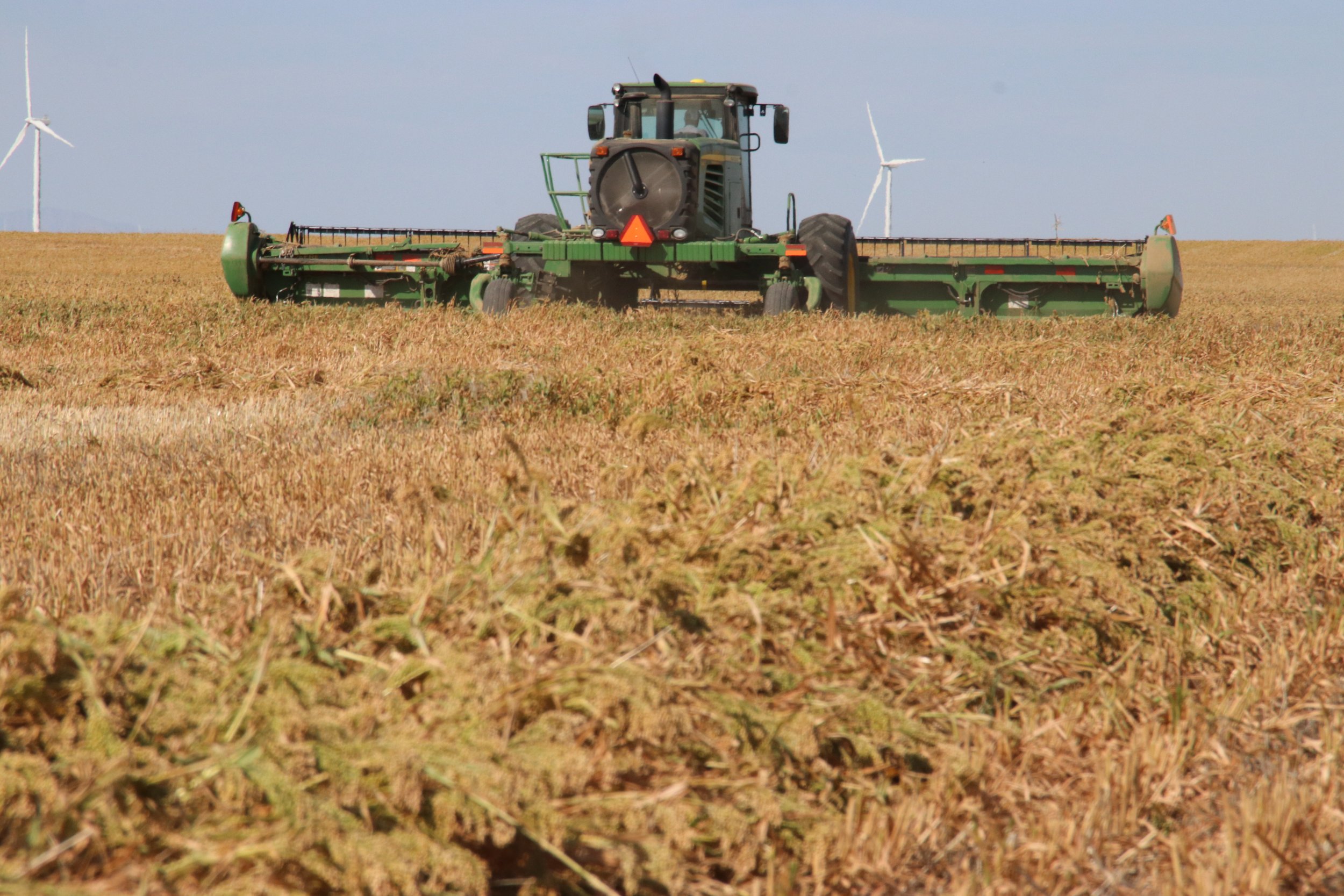The Profitable and Climate Conscious Proso Millet
How Dryland Genetics proso millet varieties benefit farmers, consumers and the planet.
2022 was a roller coaster ride for many producers across the country. Pockets of North America had adequate rainfall and record-breaking crop yields, while other parts of the country saw little to no rainfall, resulting in heartbreaking yields due to the ongoing drought.
Not knowing what the future holds, now is the time to make the most out of every acre of farmland by producing proso millet. With over 725,000 acres produced across the United States, this ancient grain is impacting producers, consumers and the planet.
Here’s how.
Producers.
Regardless of the higher commodity prices, profitability continues to be a struggle for U.S. farmers. Last year alone, farmers were not only impacted by drought conditions but by skyrocketing input costs as well. Land, equipment, seed and inputs all continue to go up in price year after year, making profit margins smaller, even as farmers receive more for their crops.
Farmers often stop and think about their farming practices, options and at the end of the day, how to see a greater profit margin in their operation. Farmers may be looking for a crop that they can add into their crop rotation, or use as a double crop. Proso millet is an answer to their needs.
Consumers.
Now, let’s shift to the consumer. Since the pandemic in 2020, consumers have become more mindful about not only where their food comes from, but how it is grown as well. Not only is proso millet a healthy grain that can be found in foods like Kind bars and multi-grain bread, but is an alternative grain that is grown in the United States that supports sustainable farming practices too!
Proso Millet is everywhere! Learn how this wonder grain impacts our everyday lives.
The Planet.
Finally the planet. We all know that we cannot make more land, we have to be more resourceful with the land we have and produce the most crop per acre possible with sustainable practices, especially with the growing population.
Proso millet is a cereal grain that can be grown as a double crop with winter wheat or winter peas, creating a healthy crop rotation while producing more grain from the same land. When adding proso millet to a double-cropping practice with a winter crop, like winter wheat, it allows producers to continually have their topsoil covered. This allows for healthier soils and crops due to keeping as much organic matter as possible in the topsoil and reducing the risk of erosion.
Furthermore, proso millet is classified as a C4 cereal grain, giving it the ability to convert carbon dioxide into oxygen more efficiently than wheat or soybeans. Producing proso millet is estimated to result in 25% fewer carbon emissions as compared to corn making it a grain that helps with mitigating climate change.
Recapping the Advantages:
As a PRODUCER, you can expect to see the following advantages when growing proso millet:
Proso millet is water efficient, using less water and leaving more for the next crop. Proso has a fibrous root system that is able to absorb the nutrients it needs, and doesn’t have to go deep into the soil to retrieve them.
Provides a shorter growing period compared to other crops making it an easy double crop option. In fact, proso millet is ready for harvest within 60-90 days from planting.
Compared to the following crops:
Corn | 130 - 150 days until harvest
Sorghum | 130 - 150 days until harvest
Soybeans | 100 - 120 days until harvest
Decrease in input costs as it has a lower seed cost and oftentimes does not need an additional nitrogen application.
As a CONSUMER, reap in the nutritional benefits by eating Proso Millet:
A healthy grain that is high in fiber and magnesium.
Enjoy one of the few grains that are naturally gluten-free.
Indulge in a protein-rich grain. Proso Millet has the highest percentage of protein across all millet species with 12.5% protein!
There’s more! Learn more about the popular uses for proso millet.
As a PLANET, here’s why we want to see more use of Proso Millet:
Become more resourceful in producing a high-yielding grain despite the rising drought conditions. (psst… did you know proso millet is able to grow with the least amount of water compared to other grains?!)
Due to the small amount of water needed, deep soil moisture for other crops, like wheat, is left in the soil.
Proso’s cultivation releases less carbon into the atmosphere compared to other crops like corn and sorghum.
So whether you are a producer, a consumer, or an advocate for changes in our world that can make a great impact, while still meeting the ongoing challenges of feeding the world, Dryland Genetics’ Proso Millet has an answer for all. If you want to know how you can grow proso millet or learn how you can be a part of this millet movement, contact us.



